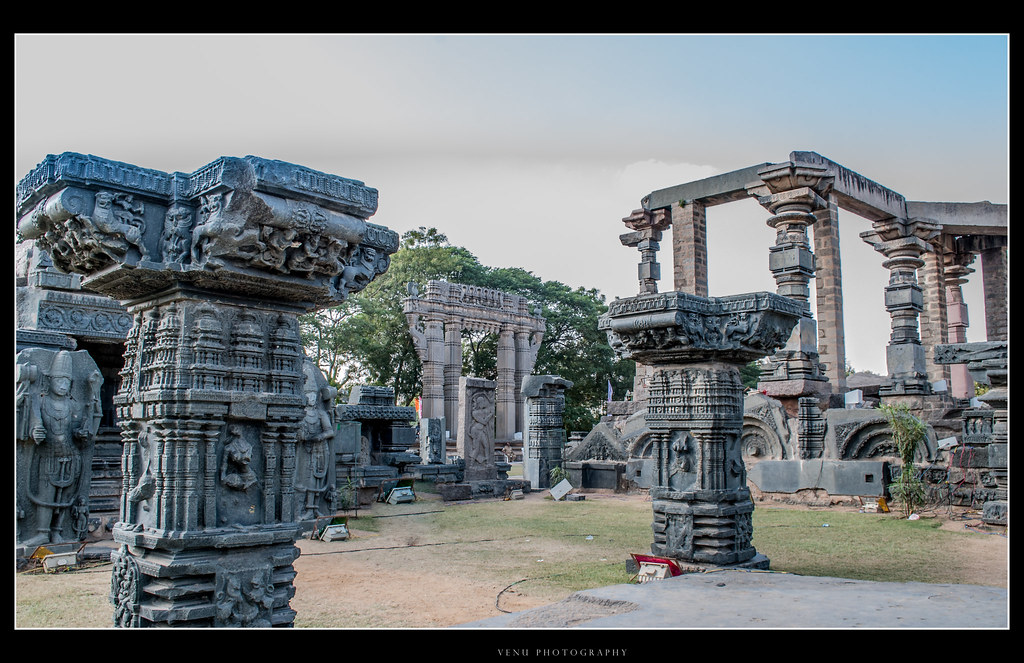Warangal Fort: In the heart of Telangana, the city of Warangal stands as a living testament to the region’s rich historical legacy. At the epicenter of this historical tapestry lies the formidable Warangal Fort, a majestic citadel that whispers tales of bygone eras. With its imposing walls, intricate carvings, and echoes of royal valor, the Warangal Fort stands as a symbol of the region’s architectural grandeur and cultural heritage.
“Embark on a captivating journey through time at Warangal Fort, a majestic citadel steeped in history and architectural brilliance. Nestled in the heart of Warangal, Telangana, India, this formidable fortress stands as a testament to the Kakatiya dynasty’s power and grandeur. Marvel at the intricate carvings of the Thousand Pillar Temple, explore the imposing gates and remnants of royal structures, and soak in the rich cultural heritage of this ancient site. Warangal Fort promises a mesmerizing blend of archaeology and artistry, making it a must-visit destination for history enthusiasts. Plan your trip and delve into the historical wonders of Warangal Fort.”
Historical Background: Warangal Fort
Built in the 13th century by the Kakatiya dynasty, the Warangal Fort served as the crowning jewel of their empire. The Kakatiyas, known for their military prowess and architectural brilliance, left an indelible mark on the landscape of Warangal. The fort, initially constructed by Ganapatideva and later expanded by his daughter Rudramadevi, became a stronghold of power and prestige.
Architectural Splendor: Warangal Fort
The Warangal Fort is a masterful blend of Kakatiya and Chalukyan architectural styles, showcasing the finesse of the artisans of the time. The fort complex is characterized by its massive stone gateways, ornate pillars, and intricately carved walls that depict scenes from Hindu mythology, including stories from the Ramayana and the Mahabharata.
The Thousand Pillar Temple: Warangal Fort
Nestled within the fort complex is the Thousand Pillar Temple, a marvel of Kakatiya architecture. Built during the reign of Rudramadevi, this temple is renowned for its intricately carved pillars, each bearing unique motifs and detailed sculptures. The temple, dedicated to Lord Shiva, Vishnu, and Surya, serves as a testimony to the religious tolerance and cultural synthesis prevalent during the Kakatiya era.
Ruins and Remnants:
While the fort once stood as an impregnable stronghold, the ravages of time and various invasions have left the complex in a state of partial ruin. Despite the dilapidation, the remnants of the fort bear silent witness to the grandeur it once commanded. The surviving structures, including the grand entrance gates, evoke a sense of nostalgia for the era gone by.
Kakatiya Thoranam:
The Kakatiya Thoranam, or the Kakatiya Arch, is one of the most iconic features of the Warangal Fort. This freestanding arch, adorned with intricate carvings, is a symbol of Kakatiya pride and is depicted on the state emblem of Telangana. The arch stands tall, representing the resilience and enduring legacy of the Kakatiya dynasty.
Epitome of Kakatiya Engineering:
The engineering marvels of the Warangal Fort are evident in its water management systems, including the massive stone tanks and reservoirs that once catered to the needs of the fort’s inhabitants. The ingenious Kakatiya irrigation techniques showcased their advanced understanding of hydraulic engineering.
Heritage Conservation Efforts:
Recognizing the historical and cultural significance of the Warangal Fort, various conservation efforts have been initiated to preserve and restore the architectural marvels within the complex. Government bodies and heritage enthusiasts are working together to ensure that future generations can appreciate the splendor of this ancient citadel.
Visitor Experience:
For history enthusiasts, architecture aficionados, and curious travelers, a visit to the Warangal Fort is a journey through time. The atmospheric ruins, the grandeur of the Kakatiya Arch, and the intricate carvings on the temple pillars provide a tangible connection to the glorious past of the Kakatiya dynasty.

Conclusion:
The Warangal Fort stands as a living testament to the indomitable spirit of the Kakatiya dynasty and their contributions to the cultural and architectural heritage of India. Despite the passage of centuries, the fort continues to command attention and admiration, inviting visitors to unravel the mysteries of its storied past. In the shadow of its weathered walls and ornate carvings, the Warangal Fort remains a beacon of historical significance, beckoning all who seek to explore the grandeur of India’s medieval history.

